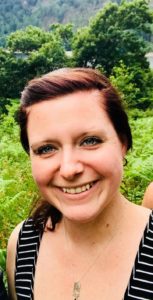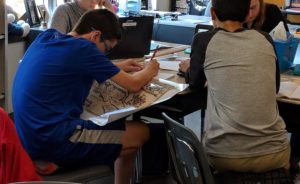Sarah Mason teaches at Bennett Middle School in Wicomico County: this year, she was honored as our nominee for National History Day’s Patricia Behring Teacher of the Year Award. Our Maryland History Day program is an affiliate of National History Day: each of the 58 National History Day affiliates may nominate one middle school teacher for the Behring Award. Mason writes about her experience as a Maryland History Day teacher and the opportunities provided to her students.

In my seventh grade World History class, students explore ancient and medieval events through a global, and often modern lens. In 2018, my teaching responsibilities expanded to include 8th grade US History which left me searching for a new way to engage students. As with many teaching innovations, a strategy took shape during an informal brainstorming session with a veteran coworker: What better way to engage students and personalize their knowledge than by drawing their attention to the previous events of their own backyard?
The decision was made: My eighth grade US History students were to explore some of our national story through a local lens. Projects my eight graders would make through Maryland Humanities’ Maryland History Day program presented the perfect opportunity to blend local research with historical thinking skills: this combination would ready my eighth graders for their high school experience.
We are fortunate to live in an area where significant events have continuously unfolded for hundreds, even thousands of years. While historians have done their due diligence by thoroughly researching the major events, the historic density in our area suggests that there is much more to be uncovered. My grandmother, who volunteered as a mapper and archivist at a small eighteenth-century church and museum in Virginia, inspired my love of local history and architecture. I hope to spark that same interest in many of my students. Untold stories are all around us and are aching to be told if only we know where to look.

On the Eastern Shore, we’re extremely fortunate to be the home of the Edward H. Nabb Research Center, a state-of-the-art local history archive located in the library of Salisbury University. After my students choose their local research topics and exhaust their source search online and at our school library, we head to the Nabb Center to find our primary sources. Dr. Creston Long and the staff of the Nabb Center are instrumental in assisting my students with the discovery and use of local primary sources. They are taught how to handle, analyze, and give credit to delicate diaries, photographs, government records, newspapers, business ledgers, and many other local treasures. While exploring these materials, suddenly the gap between my students and the past decreases, as their compassion and curiosity increase.
Throughout the project, students strengthen their connection to the past as local perspectives make the content more approachable and familiar. Many of my students this year researched local people and events in the fight for racial equality, with topics ranging from Harriet Tubman to the last lynchings on the Eastern Shore, and even the Baltimore Uprising. Examining some of the national story of the African American struggle for equality through the lens of some of the students’ hometown personalizes their learning and increases their compassion and understanding. Ultimately, the study of local history allows my students to develop greater empathy for those who struggled in the past, which strengthens their development into passionate, informed, and effective local and global citizens.
Disclaimer: The views and opinions expressed on our blog do not necessarily reflect the views or position of Maryland Humanities or our funders.

